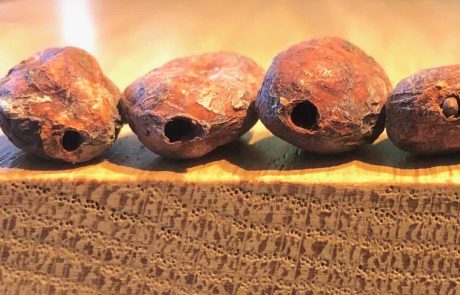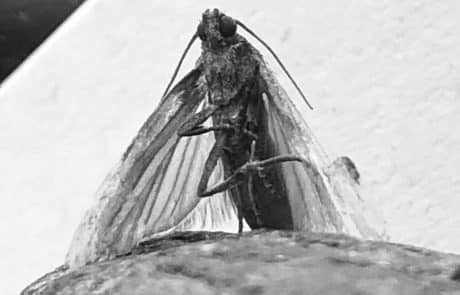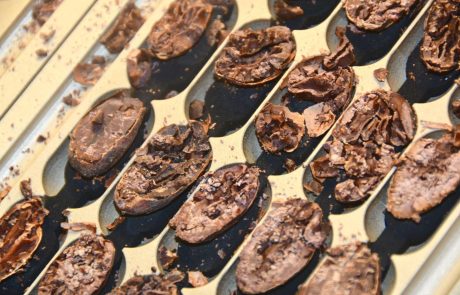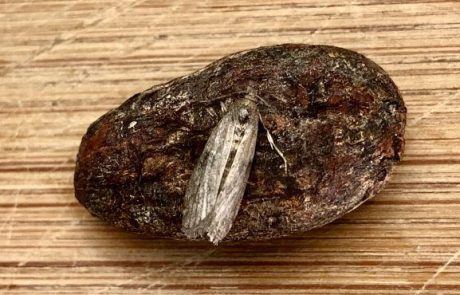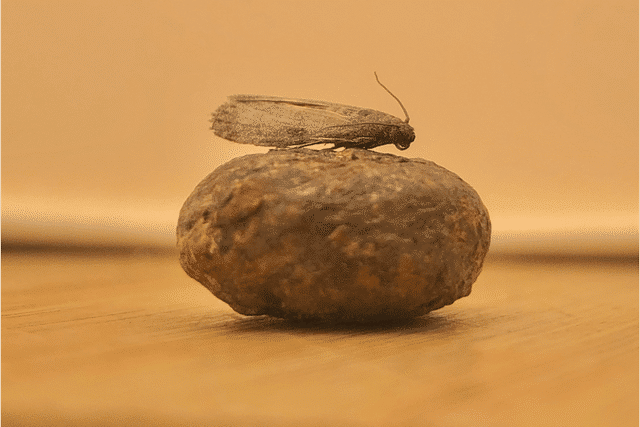
Cacao Moth: don’t bug me please
We want to share with you some insights on Esphestia Elutella, better known as the "Cacao Moth".
EPHESTIA ELUTELLA
We can all agree that Ephestia elutella is a name too beautiful for a little pest like the cacao moth, also known as tobacco moth or warehouse moth. The species is native to Europe, but has found its way to practically all parts of the world.
Like butterflies, the cacao moth develops from egg to larva to pupa to moth. The moth's life is only 14 days, but within these days a female can lay up to 300 eggs. In corona language: R = 300, and we all know that is not good. In fact, it is really bad.
Being a good mother, the moth lays the eggs in or close to food her offspring favours, which includes cereals, nuts, dried fruits, tobacco and – of course – cacao. After two weeks of feeding on the product and making webs while doing this, the larvae move away from the food and pupate. When temperatures are good, around 25° Celsius, the pupae will turn into moths, and the cycle will start all over again.
OPTIONAL OR NOT?
There is a similarity between bowel movements and cacao moths – they are both unavoidable. They can travel from origin to warehouse. They can multiply during transport. They can affect clean bags in storage. Most chocolate makers will have had cacao moths in their storage rooms, and if not, it will happen one day. At Silva's warehouse the cacao moths especially love to spend the summer time in the bio certified zone of the warehouse. Luckily we got to know the little bugs quite well, and became quite good in managing them.
TIPS & TRICKS
Here are some measures and ideas to prevent cacao moth or contain an infestation:
🧹 Clean and dry environment
General cleanliness is key to stop and control the cacao moth. This means regular wiping, sweeping and mopping, also in cracks and crannies. And keep your storage room dry: moisture favours the development of moths, while dryness discourages them. Humidity around 50% or lower is recommendable.
🆕 Renew stocks regularly
Bags infested with cacao moth can easily contaminate new arrivals. Your new cacao bags can enter your storage as clean as can be, and will have eggs on them within days from moths that moved house from old bags. Finish old stocks completely, don't let them stay in your storage room.
❄️ Cold treatment
During the summer months, from April to September, all outgoing orders in Silva's warehouse undergo a cold treatment: the cacao bags spend 5 days in a ventilated freezer container with temperatures of -25° Celsius. This is a biological way to kills insects – including cacao moths – in all stages. Ephestia elutella prefers tropical temperatures, and cannot survive in the cold.
💕 Pheromone traps
Female cacao moths use pheromone to attract a male counterpart. A pheromone trap uses the hormones' scent to draw male moths, and traps them in water or on a glue strip. Females are left without mating partners, breaking the life cycle of the cacao moth. Do we use these at Silva? Yes, it is a good way contain an infestation and also to monitor if the number of moths is going down.
💡 Light traps
Fluorescent lamps, ultraviolet light, black light attract certain insects. At Silva we tried light traps, but success was limited. We suspect light traps are better to catch nocturnal moths. Of course, we are open for suggestions, so if you have good results with light traps we are very interested to hear about it.
📦 Airtight boxes
In case you observe infestation in a bag with cacao, it is best to isolate this bag as soon as possible from other bags. It is a good idea to store unaffected cacao in airtight containers to prevent larvae to feed on the product. The scale of our cacao warehouse does not allow for this solution, although hermetic storage bags (aka GrainPro or Ecotact bags) come close. Some of Silva's cacao origins use hermetic storage bags to protect cacao during transport and storage. These bags are helpful to prevent infestation and maintain quality, however there are costs involved and the use of plastic is also a dilemma. In some countries of origin the bags are not yet available.
🌬 Low oxygen treatment
Similar to the cold treatment, the cacao is placed in an airtight chamber in which oxygen levels are lowered to the point where insects cannot survive. To apply low oxygen treatment one needs to rent the whole chamber, making it a relatively expensive solution for smaller quantities.
🦠 Parasites
The introduction of parasites that prey on the larvae of cacao moths is under investigation. Certain flies lay their eggs in the moths' eggs, destroying them by doing so. Today, this eco-friendly solution is not applied on cacao yet, but we are following progress with this treatment with great interest. We'll keep you posted.
🧪 Fumigation
This is one of the most effective ways to eradicate cacao moths. Under the motto 'desperate times ask for desperate measures' most cacao cooperatives and exporters will turn to fumigation as a way to break the vicious cycle of a cacao moth infestation. An insecticide, usually aluminium phosphide, is spread over the cacao as a gas. Sometimes pellets/tubes are placed in the cacao load and the gas is released upon reaction with ambient temperatures, killing the moths. For some countries fumigation is even compulsory to be able to export cacao. At Silva we can fumigate cacao bags in a closed container. Because this treatment is not compliant with organic practices, the cacao will lose its organic certification if it has one.
We hope to have provide you with some valuable information for a cacao-moth free workspace.
Don't hestiate to reach out !

